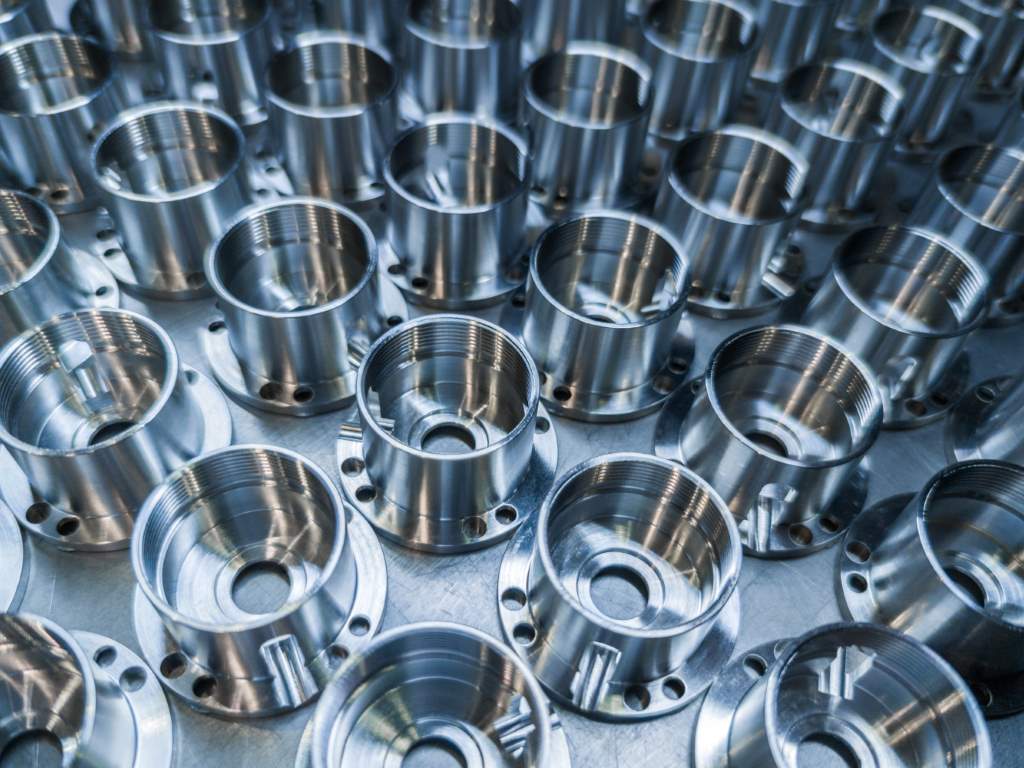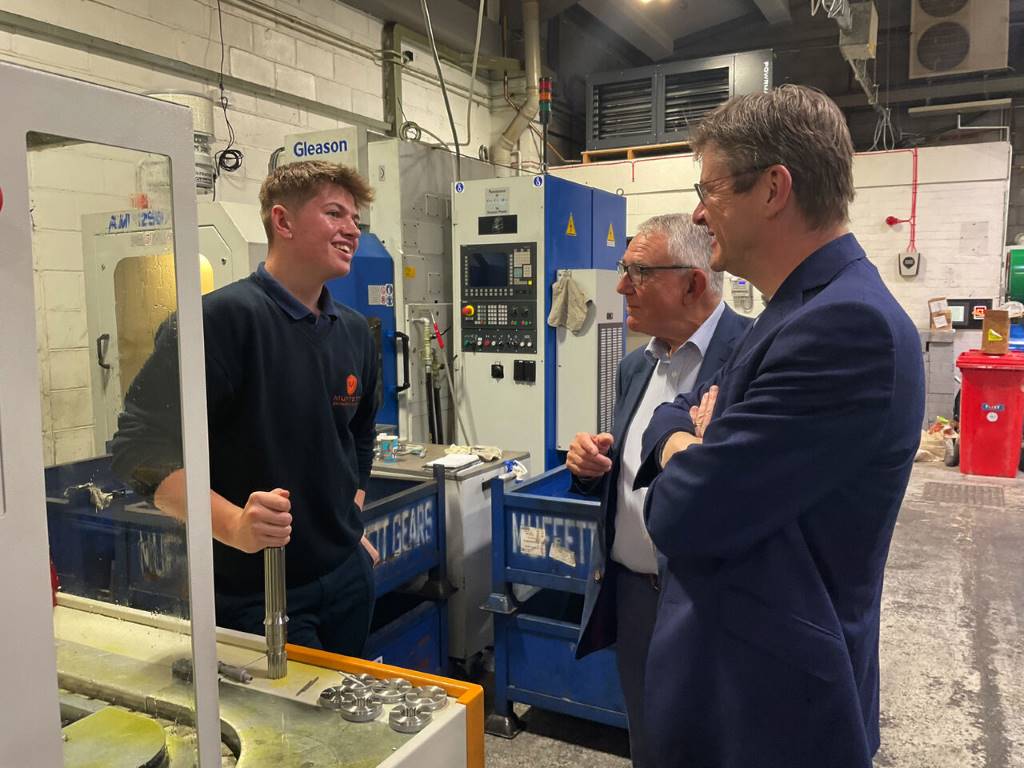Living with lasers
The UK's first Salvagnini L1Xe fibre laser profiling centre has been installed at the Calne, Wiltshire headquarters of Altex Engineering...
The UK's first Salvagnini L1Xe fibre laser profiling centre has been installed at the Calne, Wiltshire headquarters of Altex Engineering, where it has accelerated laser profiling times by a factor of five in comparison with the eight year-old 3kW laser cutter it replaced. Solutions reports.
Despite the tentative return to economic growth, the subcontract fabrication market remains a tough environment in which to trade making it essential for companies competing in this arena to ensure they can offer clients best value for money without any compromise to product quality.
With this thought in mind, Altex Engineering recently began looking for a suitable replacement for its reliable, but ageing 3kW laser cutter.
“There was essentially little wrong with our existing laser cutter, however, it was approaching a major service and to be honest, specifications had moved on,” explains Colin Gill, planning engineer at Altex. “We knew there were machines that could do a much faster, more efficient job, such as Salvagnini's L1Xe. When we looked at the L1Xe we couldn't believe its speed and power, as well as the potential savings, both economic and ecological.
“We benchmarked the L1Xe against a number of notable competitor machines, but nothing could match the machine's overall performance.” The UK's first Salvagnini L1Xe solid state fibre laser was duly installed at Altex at the end of February 2010.
Making a statement
Altex is a subcontract engineering company of some repute. Established in 1982, the family owned business is accredited to ISO9001 and is an approved supplier to government agencies and several national and multinational organisations. It moved to purpose-built premises in 2000, from where it has evolved to become one of the UK's foremost subcontract manufacturers of sheetmetal work and precision machined components.
“Acquiring the country's first L1Xe is a coup for Altex, and is befitting of our market position,” says Mr Gill. “Coming amid challenging economic conditions I think our investment makes a real statement and we knew the advantages it would bring. For instance, although the resonator is 2kW, the solid state fibre technology means it gives far greater output than our previous 3kW machine, making it up to five times faster based on our experience since installation.”
Salvagnini's solid state fibre laser cutter requires no laser gas, mirrors, turbine, bellows, beam compensation system or routine service requirements for the laser source. No start up time is necessary and power consumption is low. Optical fibre is used on the L1Xe to generate the beam inside the electronic source and transport the beam from the source to the machine. The dense beam that is produced does not require high power levels to achieve optimum performance or cut thick materials.
At Altex, the L1Xe has been set to work profiling components destined for use in sectors that include defence, furniture, retail and heating. The machine processes steel up to 18mm thick, stainless steel up to 10mm and aluminium up to 8mm. Due to the wavelength of the fibre laser, it is also possible to cut highly reflective materials such as copper and brass up to 5mm thick – a feat not achievable using more conventional CO2 laser technology.
Simple interface
General laser profiling tolerances at Altex are 0.2mm, which was about the limit of the company's previous laser cutter. However, the Salvagnini L1Xe has a cut of 0.07mm, which makes it far more conducive to achieving tight tolerances if required.
Changing to Salvagnini technology proved to be straightforward for Altex, despite having a large number of parts programmed to suit the previous laser cutter.
“To be honest it was very easy to learn Salvagnini's SiX control system and we picked it up with minimal training,” explains Mr Gill. “As a company we use Radan software throughout the fabrication shop, and it proved very simple to interface the L1Xe with it. In terms of the individual programs we only needed to set new tooling parameters, which could be done with just a few mouse clicks.”
Batch sizes at Altex range from one off prototypes up to mass production quantities. As is the case throughout the manufacturing sector, most customers want smaller batches delivered more frequently, on shorter leadtimes.
“As recently as two years ago leadtimes were 6-10 weeks but today it is more likely to be 10 days. No one wants to keep stock and it's all about reduced work in progress, just-in-time (JIT) production and optimum warehouse management based on reduced inventories. The L1Xe gives use that flexibility.”
The performance of the L1Xe at Altex is enhanced further by a pallet exchange system that provides easy and efficient production changes and high process reliability. During the pallet changeover phase, the table with the processed workpiece passes beneath the table carrying the incoming blank, eliminating any risk of cut parts or scrap falling on to the incoming blank.
Green machine
Energy consumption and running costs are traditionally high on laser cutting machines, which is why the design team at Salvagnini set out to create a new benchmark of environmental credentials with the L1Xe. The fibre laser source is said to reduce hourly running costs significantly compared to a CO2 source as a result of factors that include: up to 70% reduction in energy consumption due to high source efficiency; lower impact on consumables due to the absence of optical path, mirrors and bellows; reduced maintenance costs; the elimination of laser gas; and the eradication of standby currents and source warm up times.
“There is no doubt that the Salvagnini L1Xe is an ecologically responsibly solution,” observes managing director, Adrian Brewer. “We haven't really had the machine long enough to establish what the annual energy consumption savings will be, however, I am anticipating electricity savings in the region of £500 a month, which is a significant amount of money for any manufacturer.”
Altex is generating further savings through the acquisition of an in-house nitrogen generating plant, which was installed last year. At a cost of around £70,000, the plant is saving around £22,000 a year on cylinder delivery/consumption, so will pay for itself in around three years. The added benefit of using nitrogen as an assist gas is that it doesn't oxidise the edge in the way that oxygen does. Using oxygen means that sheetmetal parts need to be wire brushed after laser cutting to remove the carbon layer before painting. Failure to do so could see the paint flake off prematurely. Using nitrogen also eliminates the need for edge cleaning.
Altex is certainly proving itself to be a progressive subcontract manufacturer with ambitious plans for growth. Already housed in a purpose-built 10,000ft² facility, the site offers a further 8,500ft² for potential expansion. The recent recruitment of two additional employees has boosted the workforce to 31.
Salvagnini
www.salvagninigroup.com












